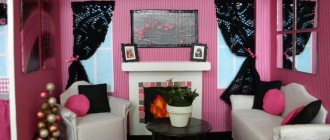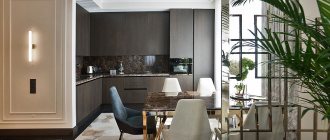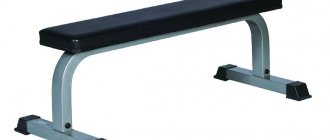Home » Home Improvement » Furniture
Furniture
Novozhenina Anna
19362 Views
Today let's talk about how to arrange furniture in living rooms - living room, bedroom and children's room.
The placement of furniture in a room can affect mood, the visual size of the room, and the functioning of the family. Getting creative with your room arrangement can be a great way to set up your living area in a special way. Here are some great living room furniture organization tips to try and give your room a whole new look.
Let's start with cleaning
Putting things in order sets the mood for change: once you start cleaning, you shouldn’t stop at simply washing the surfaces.
We recommend disassembling the interior cabinets, getting rid of unnecessary things and freeing up space. Perhaps this will help set you up for more significant transformations: replacing bulky walls with lightweight cabinets and shelves, or selling an unloved chair or an outdated computer desk. General cleaning will help identify weak points in the apartment. Perhaps an awkwardly placed sofa has long been in your way or an empty corner has irritated you.
Children's room
Furniture placement requires special attention. There is no need to place it in a central way, since the room should have as much free space as possible for the child’s games and activities. Therefore, you can choose two arrangement options. The first is to create a separate play area with plenty of space. In this case, the arrangement of furniture can be done in any way. The second is placing furniture along the wall. This way you can save a lot of space.
Furniture arrangement. Learning from the example of a bedroom (1 video)
Beautiful furniture arrangement options (14 photos)
Making a plan
Before moving heavy furniture, it is worth developing a design. This seems difficult only at first glance: in fact, there are several ways to work on the layout:
- Manually draw a plan on a piece of paper.
- Use a computer program.
- Create a simple model by cutting out furniture from paper: such models are convenient to move around the drawing.
Main difficulties
Rearranging furniture in an apartment involves moving almost all interior items, so you have to deal with various difficulties:
Interior items equipped with wheels are considered the easiest to rearrange, as they are quite easy to move.
. Due to all the above difficulties, rearranging furniture in a room should be done by several strong people. First you need to decide where exactly this or that piece of furniture will be placed.
We monitor safety
You should be careful when rearranging furniture: remove everything that might get in the way—carpets, objects scattered on the floor, and wires. Before moving your wardrobe, you should completely empty it of clothes and belongings. The same goes for furniture with drawers or shelves. It is worth inviting an assistant, otherwise the large structures will be easily damaged.
There are several tricks to avoid scratching the flooring when moving furniture:
- Place pieces of old linoleum under the legs of a cabinet or sofa.
- Use a wool rug.
- If the listed items are not available, slices of raw potatoes, plastic jar lids, and pieces of damp cotton cloth will come to the rescue.
Also on sale are special shoulder straps for carrying heavy objects, which reduce the load by 66%.
New carpet
In how to transform a room with your own hands without renovation, such an ordinary interior detail as a carpet can help you. Today, stores offer a large selection of various carpets with small or large pile, plain and multi-colored, domestic or foreign production. You can choose a bright rug to add some color to your room. If your floor is covered with wall-to-wall carpet, why not throw a few small rugs on the floor instead? Adding soft rugs to a room is a good way to give it a new cozy look. Forget about the floral carpets of our grandmothers' times. It's time to throw them away and put a bright yellow round rug with thick pile on the floor! Or maybe a rug with a black and white geometric pattern would suit you better?
Working with light
If your reading area or work desk is tied to outlets or wall lights, it's worth considering this before moving furniture. The lack of light brings a feeling of discomfort, so you should think about the level of illumination in advance.
You may need additional light sources or extension cords that will have to be hidden. It is good if the apartment has portable lamps, lamps and floor lamps.
Lighting
When thinking about how to transform a room with your own hands without renovation, you should not forget about lighting. A new lighting design can make a big difference in your home. If your living room is dim, try opening the curtains to let bright daylight into the room. Replace the light bulbs in the chandelier with fluorescent lamps.
In the bedroom, on the contrary, it is better to get rid of bright light, because this is the room where we go to relax after a long day of work, so dim light from a small sconce or a lamp at the head of the bed is much better suited here than a massive chandelier with seven lamps.
If your room is furnished in a modern style, then it is unlikely that a lamp with crystal pendants that you inherited from your grandmother will be a good solution. Why not buy a floor lamp or table lamp in a high-tech style? A lamp of an unusual shape can serve not only for lighting, but also as a decorative element of the interior.
As you can see, interior elements such as mirrors and curtains, paintings and chandeliers play a very important role; they can give our home new colors and change the atmosphere. It is quite possible to create a modern interior without extra costs if you use a little imagination!
Thinking through the functionality
When starting a transformation, it is worth determining what functional areas you need. For example, have you always needed a mini-office, a reading nook, or extra storage space.
If more than one person lives in a room, zoning will be needed: a shelving unit placed across the room, a sofa with its back turned, or a curtain as a partition will do. Pay attention to the corners - they often remain unused and the usable area is reduced.
The TV and computer should not be placed opposite the window - the screen will glare. The distance between the TV and the viewer should be at least three diagonals.
How to arrange a small kitchen
In any home, the kitchen is the center of attraction. Life is in full swing here. The main character is often the kitchen unit. Manufacturers make either linear or corner models for different kitchens. Linear - all the furniture is in one row. For small kitchens, sometimes the only possible option. To fit everything that is required, we use walls along the entire vertical, wall cabinets up to the ceiling. Upstairs we put away those things that we use very rarely.
We adapt a window sill under the tabletop. A corner set is also suitable for small kitchens. It is more expensive than a direct one, but it allows you to make the most of the space, including the corner. Use all sorts of “cunning” devices for storage: a carousel system, secret shelves, more retractable and lifting structures. The latest advances in household appliances and organization of storage systems will help save space. Use built-in technology.
The kitchen, without a doubt, should have a stove, sink, work surface, and refrigerator.
Tall cabinets mounted to the ceiling will accommodate a lot of utensils and make the room visually larger. The dining area can be successfully replaced by a wide window sill or a bar counter. Don't forget about the roof rails. They will help you keep in order thousands of little things that should always be at hand. Use folding and reclining furniture.
Design tricks will also help make the kitchen lighter and more spacious: light colors and glossy furniture facades, organizing proper lighting, avoiding bulky furniture and thick curtains, carefully thought-out storage organization - use any crevice.
And, most importantly: the kitchen should be as convenient as possible for the one who spends the most time in it preparing food. Therefore, all furniture must be “fitted” taking into account ergonomic requirements.
Changing furnishings
We recommend not limiting yourself to one room: perhaps universal furniture like chests of drawers, shelving or nightstands will find their use in another room or even the kitchen.
It is also worth “breaking up” long-established pairs - for example, the usual table and chair that look good together. Combine different elements with each other so that the combinations look new, but remain harmonious. If the furniture no longer seems modern, one of the options for transforming it is restoration at home.
If the kitchen is tiny, and rearranging the living room has freed up several useful meters, it is worth organizing a dining room in the living room. An unconventional approach can appeal to all household members and bring new experiences to life.
Living room layout
Measure your living room from wall to wall, taking into account the length and width of the room.
First draw a diagram, noting measurements on all sides. Whether you create it in a computer program or draw it by hand on graph paper, a scale floor plan will be extremely useful for planning any kind of space. The easiest way to convert meters is on a scale of 1:2, where 1 m2 is equal to 2 notebook cells.
For example, a living room measuring 13 by 25 m2 will turn into a diagram measuring 26 by 50 notebook cells. Next, measure any furniture you decide to include and create a separate diagram with a unique size for each piece. If you're drawing by hand, I have an idea that involves creating mock-ups of paper furniture (to scale) by cutting it out of the paper so that it's easy to play with different furniture variations.
Determine the focal point
Deciding on a focal point will really help in planning the space - TV, fireplace, chandelier, artwork, etc. Once that is decided, the furniture pieces will fit around it.
Emphasis on the focal point of the space
If there is a TV in the living room, please note that the viewing distance of a standard TV is between 2.5 and 3.5 m and the viewing angle is no more than 30 degrees. Thus, the main sofa, daybed or sectional should be positioned against this wall. Additional armchairs and chaises can also be placed against either side of the TV wall, rounding out the seating area while adding visual balance.
Correct placement of furniture
For living rooms with a fireplace, the most important purpose, according to most people, is conversation. Thus, a semi-circular design of furniture around the hearth, with no more than 2.5 m between seats, promotes easy interaction with family and friends. For living rooms where there is neither a fireplace nor a TV, a central focal point makes the most sense. Place a sofa (or two, facing each other) around a coffee table, with chairs arranged in a circle to cover any gaps.
Arrange the table, wardrobe and sofa
Once the seating area is set (around the focal point), place the table and cabinet next to them. In the living room, the main coffee table or ottoman can be placed between the sofa and chairs. It's best to leave 50cm between the coffee table and the sofa so that drinks and the TV remote are within reach. The cabinet can be placed behind the sofa.
Wooden folding table
Be sure to leave at least 30cm between pieces of furniture in areas where people need to pass. For small spaces, consider folding tables that can fold out when in use and fold away when not in use. Storage cabinets and chests of drawers are placed against the wall where space allows.
Placing the cabinet where space allows
Media consoles and TV stands go under the TV, and a buffet is usually placed along the longest wall. Tall shelves and open cabinets that hold mementos, books, accessories and family photos look better on a larger, empty wall so it doesn't look crowded. Bar cabinets and carts are elements that add an aura of glamor to the living room.
Elegant trolley element
Consider floor and table lamps
Floor lamps take up part of the table, so a coffee table should be within reach for guests to place drinks. There are some floor lamp designs that come with an accompanying table.
Floor lamp for recreation area
Table lamps are self-explanatory—just make sure they don't take up the entire tabletop. Chandeliers should be concentrated above the main seating area. Recessed lights make sense anywhere on the ceiling since they don't droop. Spot lighting can draw attention to artwork, sculptures or a library.
Living room table lamp
Center your mat
The last element of living room furniture design is also the simplest: the rug. It should be centered in the middle of the main seating and extend a few inches under the sofa and armchairs (or even further) to anchor the entire room. If the room is already carpeted, adding a thicker accent rug on top is a great way to add warmth and encourage guests to relax and stay a while.
A rug in the living room for warmth and comfort
By following these simple steps to designing your living room furniture, you'll ensure that your space is a pleasant place to relax and flow into the rest of your home. Here are more questions to ask yourself:
- What do I want to see first when I walk into a room?
- what do I want to see on the walls - will there be an air conditioner or a radiator?
- will there be zones or dividers designed in the room?
Comfort zones in one large room
Basically, figure out what's most important to you before you start decorating or buying furniture, and you'll be able to create a special space that reflects your personal taste.
Make your dreams come true
Arranging furniture correctly
In order for the rearrangement to bring a positive result, you should listen to the following tips:
- An elongated rectangular room looks more aesthetically pleasing if its shape is brought closer to a more regular one. A closet located against a short wall, or zoning dividing the room into two squares, will help.
- To make the room seem larger, you can arrange the furniture symmetrically.
- By adding or rehanging a large mirror, you can make the interior lighter and more interesting.
- The atmosphere will become more comfortable if you place two closets on either side of the sofa or bed.
- It is not necessary to place the head of the bed against the wall - you can turn it with the foot towards the window or even place it diagonally.
Rearranging is a great alternative to remodeling that doesn't require any expense and helps freshen up your space.
Bedroom layout
Mastering spatial organization can be a difficult skill to master. For a bedroom, the basics are simple: you usually start with a single bed and adjacent bedside tables. But what about awkward angles? What if the room isn't big enough for two nightstands or a chest of drawers? What if the room is too long and leaves a lot of dead space? Where in the room should the rug be placed?
Interior of a narrow and long bedroom
Achieving the perfect bedroom layout may be easy in word but not in practice. However, with a few basic rules, you can optimize your bedroom furniture to create the perfect room. That's why I'm providing you with some basic layouts to help you choose the right plan.
Compact and roomy
Small-sized
Layout: If your bedroom can barely accommodate a bed, there are a few hacks to help you manage the space. While it's not advisable to push the bed against the wall, try leaving as little space as possible on one side - this will leave more space on the other end for a larger bedside table. A hanging shelf on the opposite side works great in tight corners.
Bed lighting for an airy space
Bed: Opt for a small double bed with built-in storage instead of a dresser.
Bed with large storage
Additionally: If you lack a large closet, choose clothes hangers. Place a small bench or chair next to them for any purpose, such as a spot for a bag, so that nothing ends up lying on the floor. Mirrors will also help a room look larger, so use multiple mirrors that can be placed strategically.
Full size
Layout: A large rug (20x30cm or larger) will help anchor the space. Choose matching nightstands and lamps that take up most of the wall, and a chest of drawers with an armchair on the opposite wall. This is a classic, reliable bedroom design that works like a charm.
Full size bedroom with furniture
Bed: A typical master bedroom, more or less square, should have enough space for a queen or king size bed.
Large space for a king-size bed
Extras: If you have the space, a long bench at the foot of the bed will come in handy and is not only aesthetically pleasing but also comfortable.
Large bedroom with the necessary furniture
Long Layout
Layout: In a long, narrow room, it may be tempting to place the bed in the far corner, but try centering it along a long wall instead. Since the space is large, it will likely be difficult to find a rug that is the right size and they will usually be significantly more expensive. Instead, place your favorite rug on top of a less expensive extra large main rug. Instead of regular bedside tables, opt for larger chests of drawers that will really fill up the space.
Choose a large chest of drawers for storage
Bed: Choose a 2m x 2m king bed - you have room for it, so enjoy it!
It is better to choose a bed according to your height
Additionally: Large bedrooms often come with a walk-in closet, so ditch the chest of drawers in favor of more comfortable furniture. A reading nook, desk, bench, and large plant can help fill awkward corners. Assess your needs and plan your layout accordingly.
Allow yourself more with a huge bedroom
How to properly arrange furniture in a small room combined with a kitchen
To determine how to properly rearrange a room, you first need to decide what should be larger: a kitchen or a living room. It’s better if the kitchen is spacious so that it’s easy to move around, cook and receive guests. In this case, you can order a kitchen set with many drawers on the top tier and a minimum on the bottom. Then you can put all the kitchen furniture and appliances against one wall, including the refrigerator, set up a spacious dining area and start arranging the living room.
A kitchen combined with a living room must have a good hood and a window. This will help avoid spreading the smell of food throughout the apartment.
To understand how to rearrange a small room combined with a kitchen, you need to remember a few rules.
Source
How to arrange furniture in a small room: photo
If the room is small, you need to free up as much free space as possible and not clutter up the usable area. The ideal option is transformable furniture, which will help out the owners of studio apartments, one-room apartments and one-and-a-half-room apartments.
Such furniture has a drawback - a high price. But if finances allow, this is the best option for small spaces.
The essence of transforming furniture is that the sleeping area is extended only during sleep, the rest of the time it is either a comfortable sofa, or a wardrobe, or just a wall.
Ways to arrange furniture in a small room
Of the standard furniture layout options for a small room, two are best suited - asymmetrical and concentric.
An asymmetrical arrangement of furniture is, for example, a corner sofa. In this case, one part of the room will be filled more densely, and the other will remain free. If we talk about the bedroom, then the bed is not located in the center, but moves towards one of the walls.
It’s clear how to properly arrange furniture in a small room, but you can use a few more tips for proper use of the living room space.
Experts recommend leaving a distance of at least 60 cm between furniture products.
The concentric arrangement of furniture involves placing one item in the center of the room. The rest of the furniture is placed around it. The central object can be a work table, TV or sofa.
How to arrange furniture in a small room with a child
You can immediately start zoning and arrange the nursery for growth, where there will be a crib, changing table and chest of drawers, which will eventually be replaced with a work area y, a larger wardrobe and a teenage bed.
The part of the room intended for the child should not be in a draft.
Important rules for setting up a children's area:
Do you need an apartment with a children's room?
If you don’t want to deprive your child of personal space and it’s time to move to a larger apartment, contact Etazhi. We will help you sell your old apartment and buy a new one with a minimal additional payment.
Leave your number and we will call you back.
Planning Features
In an apartment, arranging furniture in apartments begins with drawing up a plan. Space parameters can be found in the technical documentation or measured independently using a tape measure. On drawing paper (graph paper) a housing diagram is drawn to scale, taking into account openings, niches and communications.
Images of interior items in exact proportions will help determine the usable area of the rooms. Furniture cut out of paper can be moved and rotated, choosing a suitable location in the room. When placing, take into account the free space for opening drawers and doors. The components must not interfere with the movement of people.
Designers recommend creating a furniture arrangement plan in an application for a PC or gadget. The program specifies the parameters of the room, then selects the components. Provides for opening door and window sashes. Depending on the complexity of the software, interior items can be either standard or resizable. Options for sketches can be saved in separate files or printed on a printer.
When forming a space, the main design element is highlighted. In the bedroom, the central detail will be the bed, in the kitchen - a dining group or “island”. In the hall, you can make a TV panel, a fireplace portal or an image (painting, photo) the focal point; in the hallway - a hanger. The accent component attracts the attention of those entering the room. Be sure to use the corners in which you can put:
Arrangement options
The harmonious arrangement of components creates a positive design perception. To make the room cozy and functional, you need to place the interior items correctly. There are universal techniques that help arrange furniture in a room.
Circular method
The placement method promotes communication, so it is often used in living rooms. The technology allows you to create 2-3 zones and physically divide the room. This option can be combined with other placement technologies. Furniture in different styles, shapes and sizes looks harmonious in the interior.
The center of the circular arrangement is a ceiling lamp, table or carpet. From the focal point, furniture is placed in a circle. The method is used in the presence of semi-oval walls and for large rooms. The placement maintains a balance, taking into account the features of the decor or the size of the components.
Circular arrangement of furniture by type can be symmetrical or asymmetrical. In the first case, interior items are placed opposite each other. The second option involves moving the dimensional components closer to the center of the location (focal point).
Symmetrical method
Paired placement of furniture is suitable for people who like pedantic order. In a calm, balanced interior, objects occupy a specially designated place. The method is used to decorate rectangular or square shaped rooms.
Paired components are placed on the same axis, often opposite one another. The main place is chosen as a focal point (bed, coffee table, decorative lamp). The function of the element is often transferred to a corner or window. Furniture is placed at the same distance from the center on both sides.
The symmetrical method is suitable for arranging interior items in the living room or bedroom. The components should not be massive; models in the same style and color are appropriate. When creating original designs, a game of contrasts or textures is used.
Asymmetrical arrangement
Reception is appropriate in rooms with improper layout and technical deficiencies. The method is used for rooms in which it is necessary to plan several zones (children's, kitchen, living room) and there is no possibility of placing paired furniture. A characteristic feature of the option is many open multifunctional areas.
The asymmetrical method is visually perceived as a mess. With a chaotic arrangement, interior items are placed at the optimal position from the focal point (fireplace, TV, piano). Balance and harmony in design is achieved through the correct combination of large and small furniture.
In the living room you can combine a table, an armchair and a floor vase with a flower into one group. In a single children's composition, a bed with one nightstand, decor on the windowsill and a panel on the wall look impressive. The deliberate clutter of an asymmetrical kitchen looks coordinated and comfortable.
“And we’ll put the sofa across”
Changes in the interior should in no case affect the convenience and practicality of using the space (except perhaps to improve these indicators). If a professional designed your apartment, most likely the concept and standards of circulation are unfamiliar to you - the risk of creating a non-functional space is quite high. Therefore, familiarize yourself with the standards in advance. For example, the hallway should have at least one and a half meters of free space, and the distance between two sofas should be at least 1 meter 10 centimeters.











